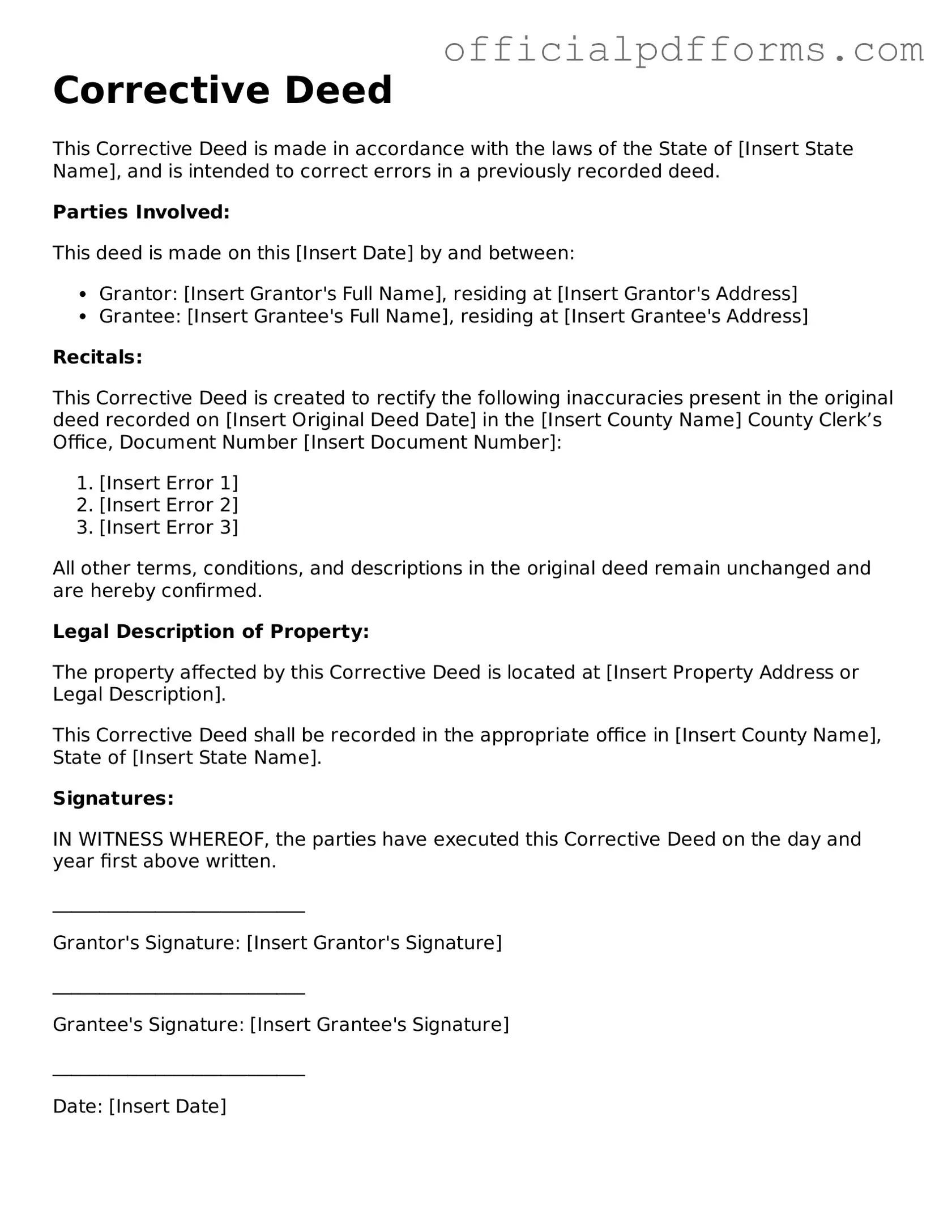Steps to Filling Out Corrective Deed
After obtaining the Corrective Deed form, it’s important to ensure that all information is accurately filled out. This process will help in correcting any errors related to property ownership or details in the original deed. Follow the steps below to complete the form correctly.
- Gather Necessary Information: Collect all relevant details about the property and the parties involved. This includes the property address, legal description, and names of the current owners.
- Begin with the Date: At the top of the form, write the date when you are filling out the form.
- Fill in the Grantor Information: Enter the names of the current owners (grantors) as they appear on the original deed.
- Provide Grantee Information: List the names of the new owners (grantees) who will hold the corrected title.
- Describe the Correction: Clearly state what the correction is. This may include correcting names, addresses, or other important details.
- Include Legal Description: Write the legal description of the property. This can often be found on the original deed.
- Sign the Form: Ensure that all grantors sign the form. Depending on your state, you may need to have the signatures notarized.
- Review for Accuracy: Double-check all entries for any errors or omissions before submitting.
- Submit the Form: File the completed Corrective Deed with the appropriate local government office, typically the county recorder or clerk’s office.
Once the form is filled out and submitted, you will receive confirmation from the local office. It’s advisable to keep a copy of the submitted form for your records. This ensures that you have proof of the correction made to the property deed.
